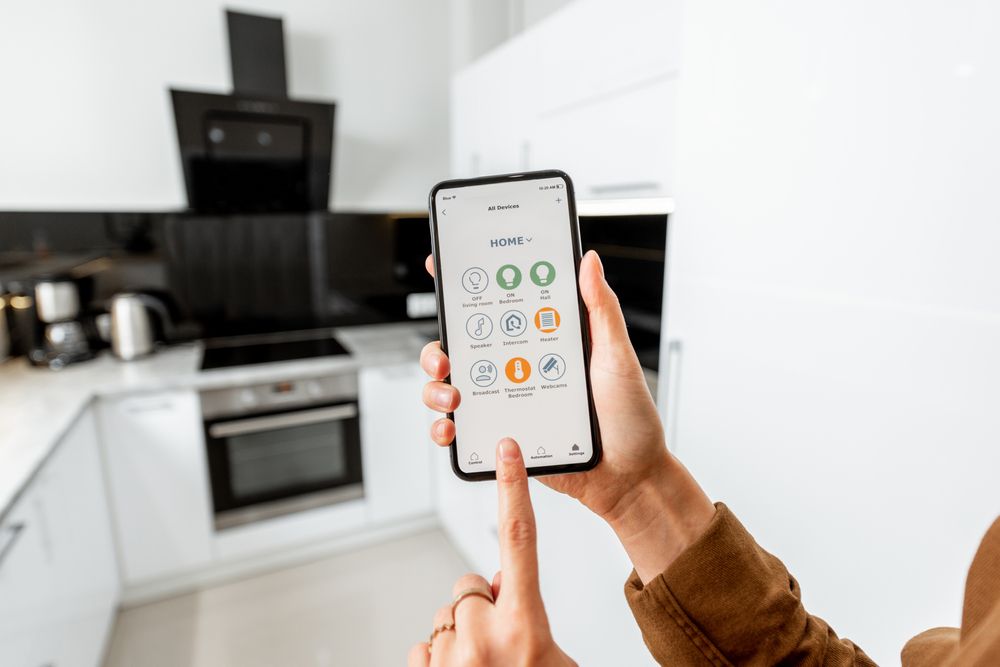Managing light in your home has long been about comfort and aesthetics, but today, it’s also about energy efficiency and automation. Enter smart window blinds—an innovative solution that automatically adjusts to changing light levels, temperature conditions, and your daily routines. These high-tech blinds are transforming how we think about lighting, comfort, and energy usage at home.
Whether you're trying to keep your space cooler during hot afternoons, maintain privacy during the evening, or reduce your utility bills, smart blinds provide a seamless and stylish way to gain more control over your living environment. Here’s what you need to know about this increasingly popular home upgrade.
What Are Smart Window Blinds?
Smart window blinds are motorized shades or slats that can be opened, closed, or adjusted using a remote, smartphone app, or voice command. But the real magic happens when they’re paired with sensors and integrated into a smart home ecosystem.
These blinds monitor environmental factors—such as sunlight intensity or indoor temperature—and automatically adjust to optimize comfort and efficiency. Some models even connect to weather services or other smart devices in your home, giving you a fully automated lighting and climate experience.
How Do They Work?
At the core of smart blinds is a motorized mechanism that controls the blind’s position. Depending on the model, this motor can be built directly into the headrail or added as a retrofit kit to existing blinds. The motor is linked to a controller—either standalone or connected to a smart home hub—that receives input from light sensors, timers, or even artificial intelligence algorithms.
Most smart blinds can:
-
Adjust automatically based on light levels or time of day
-
Respond to sunrise and sunset schedules
-
Pair with thermostats to regulate indoor temperature
-
Be programmed or controlled via mobile apps
-
Integrate with smart home assistants like Alexa, Google Assistant, or Apple HomeKit
The result is a dynamic window covering that responds in real time to your environment, helping to maintain a consistent indoor atmosphere without manual adjustments.
Benefits of Smart Blinds That Adjust to Light
1. Improved Energy Efficiency
One of the most compelling benefits of smart window blinds is their ability to reduce energy consumption. By adjusting to incoming sunlight, the blinds can help keep your home cooler in the summer and warmer in the winter. This reduces reliance on heating and cooling systems, which are often the biggest contributors to high energy bills.
When sunlight is strongest during midday, blinds can close to block excess heat. On colder days, they can open to let natural warmth in. Over time, these small adjustments contribute to significant energy savings.
2. Enhanced Comfort
Nobody enjoys harsh glare on their television or computer screen, nor the sensation of direct sunlight heating up a room unnecessarily. Smart blinds address this issue by reacting to sunlight levels throughout the day, creating a more comfortable environment.
Rather than manually adjusting the blinds every few hours, the system takes care of it for you—keeping rooms evenly lit, cool, and pleasant no matter the time of day.
3. Convenience and Automation
Perhaps the most immediate appeal of smart blinds is convenience. With a few taps on your phone or a voice command, you can control the light levels in your entire home. Set schedules for different rooms based on when you use them, or let the blinds operate completely autonomously using built-in sensors.
This is especially useful for hard-to-reach windows or busy households where controlling blinds manually is often forgotten or neglected.
4. Increased Privacy and Security
Automated blinds can be scheduled to close at sundown or whenever you leave the house. This adds an extra layer of privacy while also enhancing security. For example, if you’re away on vacation, the blinds can follow a realistic pattern of opening and closing to give the impression that someone is home.
Some systems can also integrate with smart doorbells or security cameras, allowing your window treatments to respond automatically to activity around your home.
5. Seamless Integration with Other Smart Devices
Many smart blinds integrate with broader smart home systems, enabling coordinated actions across multiple devices. For instance, when your smart thermostat detects a rise in indoor temperature, it can trigger the blinds to close automatically to block out the sun.
You can also create morning routines that open the blinds as your alarm goes off, or nighttime modes that lower them when your smart lighting system dims for bed.
Types of Smart Blinds and Shades
There are several types of smart window coverings available, and the best choice depends on your home’s needs and your aesthetic preferences.
-
Roller Shades: Sleek and minimal, these shades roll up or down smoothly and are ideal for modern interiors.
-
Venetian Blinds: Slatted blinds that can tilt and raise for light control and privacy.
-
Vertical Blinds: Great for sliding doors or wide windows, these can be automated just like smaller blinds.
-
Cellular Shades: Also known as honeycomb shades, they offer excellent insulation in addition to light control.
-
Roman Shades: Elegant and fabric-based, these add warmth to a room while offering smart functionality.
Many of these can be customized in terms of fabric, color, and opacity, so you don't have to sacrifice style for function.
Installation and Setup
Installation methods vary depending on whether you choose a pre-motorized system or retrofit kit. Some smart blinds come with everything included and can be installed DIY-style using basic tools. Others may require professional installation, especially when integrating with complex home automation systems.
Once installed, setup typically involves:
-
Connecting to your home Wi-Fi or smart hub
-
Calibrating light sensors
-
Configuring time-based schedules
-
Linking to your preferred app or voice assistant
It’s worth taking the time to explore automation options and experiment with settings to find what works best for your routine and space.
Maintenance and Reliability
Smart blinds are built for long-term performance and require minimal maintenance. Most are powered either through low-voltage wiring, rechargeable batteries, or even solar panels mounted on the window frame.
The motors are quiet and designed to last for thousands of up/down cycles. Regular maintenance may involve occasional battery replacements or firmware updates via the app.
Are They Worth the Investment?
While smart blinds do come at a higher initial cost than traditional options, the long-term benefits can justify the expense. Between energy savings, added convenience, and increased property value, many homeowners find them to be a worthwhile investment—especially in modern or energy-conscious homes.
Additionally, as the market grows and technology improves, more affordable models are becoming available, making this upgrade accessible to a broader range of budgets.





